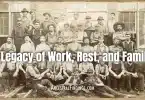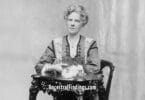The Battle of Wounded Knee stands as one of the most tragic and significant moments in American history, marking the brutal end of a long and painful era for Native American tribes. On December 29, 1890, in the frozen landscape of South Dakota’s Lakota Pine Ridge Indian Reservation, a devastating clash between the Lakota Sioux and the U.S. military resulted in the deaths of around 300 Lakota men, women, and children. This event was the final chapter in the Indian Wars, symbolizing the extinguishment of Native American resistance to U.S. expansion.
In the late 1800s, the U.S. government’s push for westward expansion wreaked havoc on Native American tribes. For the Lakota Sioux, the once-powerful tribe found themselves confined to reservations, their lands stolen, their culture under siege, and their way of life hanging by a thread. The buffalo, a vital resource for the Lakota, had been driven to near extinction, stripping them of their primary source of food, clothing, and tools. Treaties that were supposed to protect their rights and lands were repeatedly broken, leaving the Lakota in a state of despair and desperation.
In this context of loss and suffering, the Ghost Dance movement emerged. This spiritual movement, started by a Paiute prophet named Wovoka, promised the return of the buffalo and the removal of white settlers from Native lands. The Ghost Dance spread rapidly among the Lakota, offering a glimmer of hope in an otherwise bleak situation. However, to U.S. officials, the Ghost Dance was seen as a dangerous and potentially rebellious movement. The death of Sitting Bull, a revered Lakota leader, during a botched arrest on December 15, 1890, only heightened tensions. Fearing an uprising, the U.S. government increased its military presence in the region.
On December 28, 1890, Chief Big Foot, also known as Spotted Elk, led his band of Lakota to the Pine Ridge Reservation, seeking safety from the escalating conflict. The journey was grueling, and by the time they reached Wounded Knee Creek, Big Foot was gravely ill with pneumonia. Despite his condition, Big Foot sought to negotiate for his people’s safety, but the situation quickly spiraled out of control.
The following morning, U.S. soldiers from the 7th Cavalry Regiment, under orders to disarm the Lakota, surrounded the camp. Tensions were high, and communication was fraught with misunderstanding. A single shot rang out—no one knows from which side—and chaos erupted. The soldiers, armed with powerful Hotchkiss guns, opened fire on the Lakota, who were largely unarmed and unprepared. In a matter of minutes, around 300 Lakota men, women, and children were killed in what became known as the Wounded Knee Massacre.
The aftermath of the massacre was bleak. The Lakota who survived faced a harsh winter with little support from the U.S. government. Trauma and poverty became a way of life for many, as the land that had been promised to them continued to be encroached upon by settlers. The massacre at Wounded Knee marked not just the end of the Indian Wars but also the beginning of a new era of Native American history, one marked by the continued struggle for survival and recognition.
Personal stories from Wounded Knee have emerged over the years, shedding light on the human cost of the massacre. Zintkala Nuni, or “Lost Bird,” was a four-month-old baby girl found alive under her mother’s body after the massacre. She was adopted by a U.S. Army general, but her life was marked by the trauma of that day. Dewey Beard, or Wasú Máza, was another survivor who later testified before Congress about the horrors he witnessed. His testimony helped bring attention to the injustices faced by Native Americans, but change was slow to come.
One of the most controversial aspects of the Wounded Knee Massacre is the awarding of the Medal of Honor to 20 U.S. soldiers for their actions that day. Many view these awards as a grave injustice, given the nature of the massacre, and efforts have been made to revoke them. However, these medals remain in place, serving as a painful reminder of the massacre’s legacy.
The massacre at Wounded Knee was not an isolated incident but part of a broader U.S. policy aimed at forced assimilation. The Dawes Act, which divided communal lands into individual allotments, was one such policy that weakened tribal structures and led to significant land loss for Native Americans. These actions were part of a larger effort to destroy Native American cultures and assimilate indigenous people into white American society.
The legacy of Wounded Knee has had a lasting impact on Native American activism. In 1973, members of the American Indian Movement (AIM) occupied the site to protest U.S. government policies and demand treaty rights. This event, known as the Wounded Knee Incident, brought renewed attention to Native American issues and helped galvanize the modern Native American civil rights movement.
Today, the site of the Wounded Knee massacre is a National Historic Landmark, serving as a stark reminder of the consequences of U.S. policies and the resilience of Native American communities. Reflecting on Wounded Knee is not just about remembering a tragic event but also about acknowledging the ongoing struggles and contributions of Native American peoples in preserving their heritage and culture.
Read More:
“Bury My Heart at Wounded Knee: An Indian History of the American West” by Dee Brown
This classic work provides a detailed account of the displacement and destruction of Native American tribes in the American West. It covers the events leading up to the Battle of Wounded Knee and the massacre itself, offering a powerful narrative that gives voice to the Native American perspective.
“The Heartbeat of Wounded Knee: Native America from 1890 to the Present” by David Treuer
This book serves as both a history and a rebuttal to the idea that Native American culture ended with the Battle of Wounded Knee. Treuer, who is Ojibwe, explores the survival and resilience of Native American communities from the late 19th century to the present day.
“Wounded Knee: Party Politics and the Road to an American Massacre” by Heather Cox Richardson
Richardson provides a thorough examination of the political and social circumstances that led to the massacre at Wounded Knee. She explores how party politics and the broader U.S. policies towards Native Americans played a crucial role in this tragic event.
“Killing Crazy Horse: The Merciless Indian Wars in America” by Bill O’Reilly and Martin Dugard
Part of the “Killing” series, this book looks at the various conflicts between Native Americans and the U.S. government, including the events at Wounded Knee. It provides a narrative-driven account of the Indian Wars, with a focus on the key figures and battles.
“The Ghost Dance: Ethnohistory and Revitalization” by Alice Beck Kehoe
This book offers an in-depth look at the Ghost Dance movement, which played a central role in the events leading up to the Wounded Knee Massacre. Kehoe provides an ethnohistorical perspective, exploring the movement’s origins, significance, and the reaction it provoked from U.S. authorities.
“Lakota America: A New History of Indigenous Power” by Pekka Hämäläinen
This book provides a comprehensive history of the Lakota people, from their rise to power in the American Plains to their struggles against U.S. expansion and the tragic events at Wounded Knee. Hämäläinen presents a balanced and well-researched narrative that challenges conventional histories of the American West.






